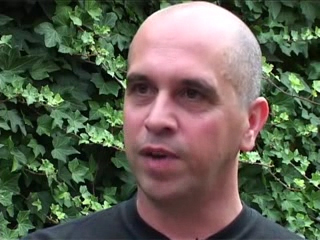3.3 Experiences of diagnosis: 1990s to now
Despite huge progress in diagnostic practices since the 1960s, parents’ reactions still vary widely, depending on what they were expecting, and also how the diagnoses were given. In these clips, note the efforts of all three parents to find positives in their child’s diagnosis.
Charlotte Moore had been relieved to have an explanation of why her son George, born in 1990, was still in nappies at age 4. Her second son, Sam, born in 1992, was also diagnosed with autism.

Transcript
Mark and his wife had imagined that Zack’s problem was primarily a failure to develop speech, and had to come to terms with the diagnosis of a lifelong developmental condition. Mark talks of profound shock, and emotions similar to bereavement and mourning. Yet he describes with warmth the realisation that Zack was just the same person as before the diagnosis, and of the progress they have both helped Zack to make.

Transcript
Arabella was not comfortable with the way diagnosis of her daughter Iris Grace, born in 2009, was delivered. She stresses the need for parents to receive positive messages and a sense of empowerment.

